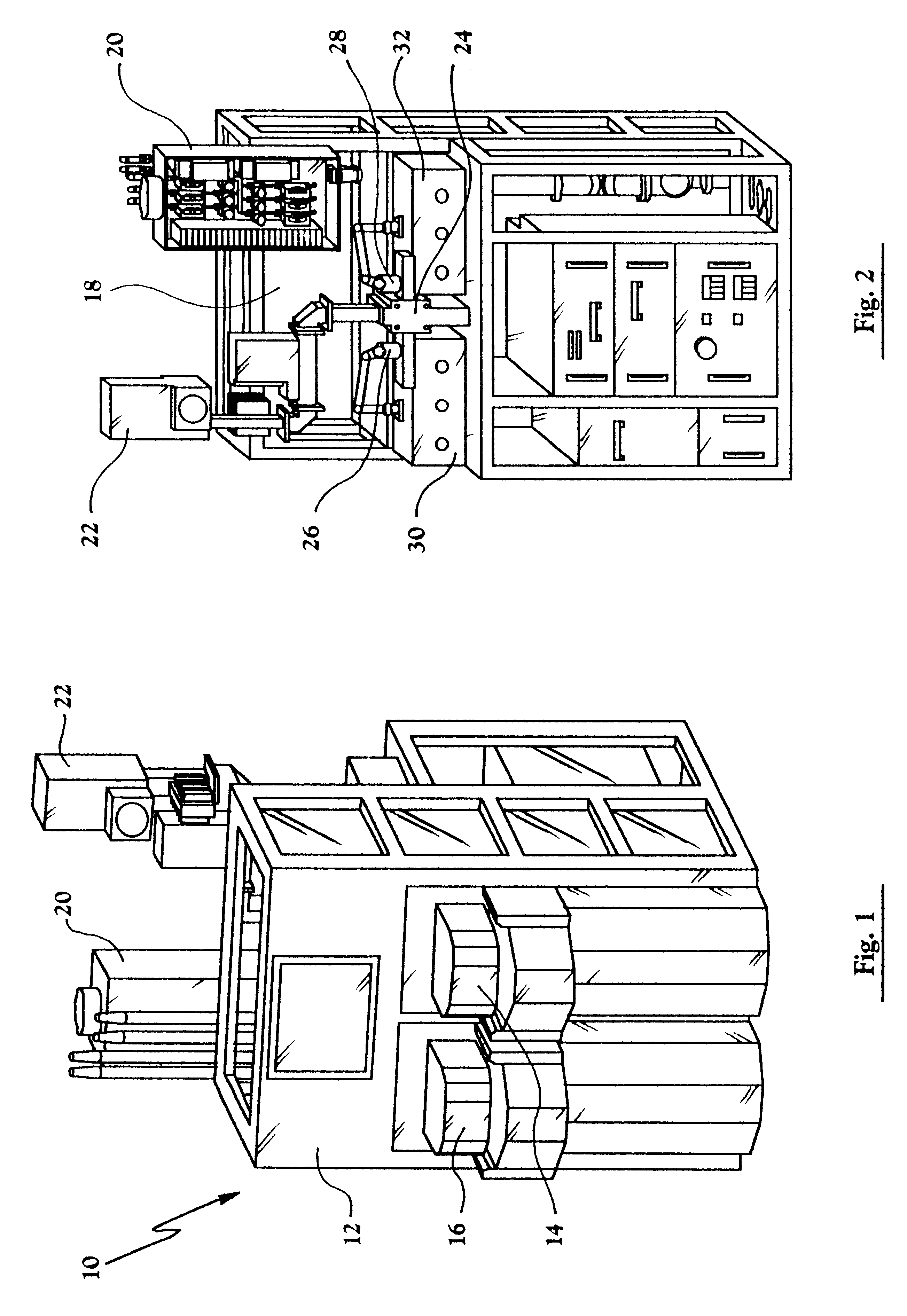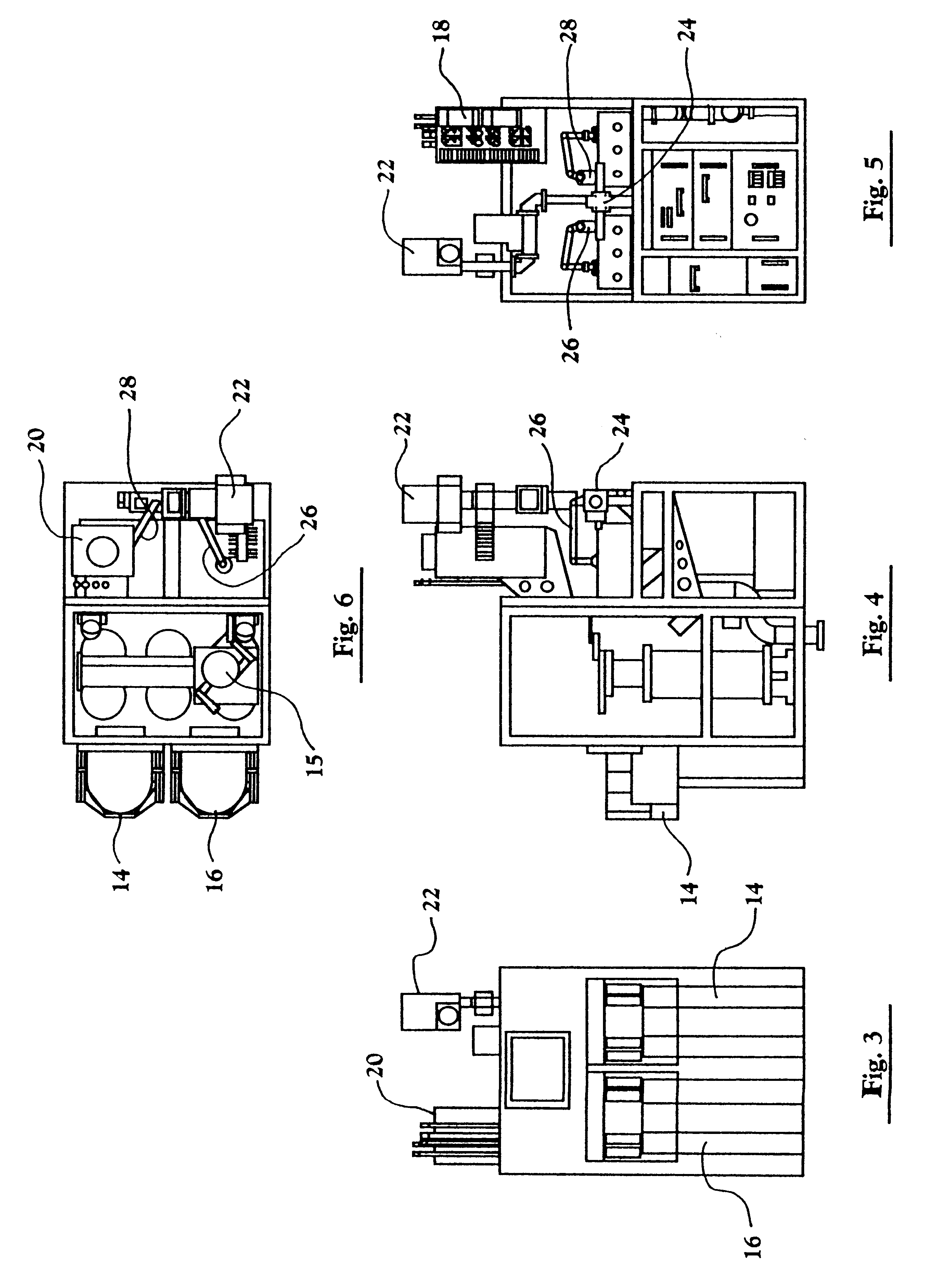Synchronous multiplexed near zero overhead architecture for vacuum processes
a vacuum process and overhead architecture technology, applied in conveyor parts, transportation and packaging, coatings, etc., can solve the problems of consuming enormous power, difficult control, difficult to ignite, etc., and achieve the effect of increasing system cost and improving overall machine throughput and utilization
- Summary
- Abstract
- Description
- Claims
- Application Information
AI Technical Summary
Benefits of technology
Problems solved by technology
Method used
Image
Examples
working example 2
11. Working Example 2
As seen schematically in FIGS. 19-20 the robot movements are those of a modified form of the working example of FIG. 17 but still similar in many respects. In FIGS. 19-20 the robot may be viewed as always standing facing toward chamber 2 and cassette 2 as seen in FIG. 19 step #1 with his left arm adjacent chamber 1 and the right arm adjacent cassette 1 and not turning 180 degrees to move a wafer from a cassette to a chamber, and, vice versa. In all other respects working examples 1 and 2 are identical.
Thus, as seen sequentially in FIGS. 19,20, wafer 1 is removed from cassette 1 (#1) and placed in chamber 1 for processing (#2); wafer 2 is removed from cassette 1 (#3) and placed in chamber 2 for processing (#4); wafer 3 is removed from cassette 1 (#5) and, as chamber 1 finishes processing, wafer 1 is removed from chamber 1 (#6) and replaced by wafer 3 (#7), and wafer 1 is stored in its original slot in cassette 1 (#8); wafer 4 is removed from cassette 1 (#9) and, ...
working example 3
12. Working Example 3
As seen in FIG. 30 the movements are those of a robot of a third working example of an embodiment of the present invention in which dual downstream or in-chamber reactors are each running the same single process using a single exterior (relative to the vacuum) 25-wafer cassette and a single exterior robot with two front arms (as was the robot of working example 2 in FIGS. 19-20), eight separate portions of which are shown enlarged in FIGS. 22-29 for ease in reading the function steps. In this working example, all of the odd numbered wafers are processed in chamber 1 and all of the even numbered wafers are processed in chamber 2, but all wafers are returned to their original slots in the single cassette. Otherwise, the process steps are the same as in the prior working examples. Microwave energy is used in this example. Additionally, while the sequence is shown for a single cassette, actually the sequence can repeat relative to a cassette #2, #3, and #4, or even ...
PUM
| Property | Measurement | Unit |
|---|---|---|
| Time | aaaaa | aaaaa |
| Pressure | aaaaa | aaaaa |
| Power | aaaaa | aaaaa |
Abstract
Description
Claims
Application Information
 Login to View More
Login to View More - R&D
- Intellectual Property
- Life Sciences
- Materials
- Tech Scout
- Unparalleled Data Quality
- Higher Quality Content
- 60% Fewer Hallucinations
Browse by: Latest US Patents, China's latest patents, Technical Efficacy Thesaurus, Application Domain, Technology Topic, Popular Technical Reports.
© 2025 PatSnap. All rights reserved.Legal|Privacy policy|Modern Slavery Act Transparency Statement|Sitemap|About US| Contact US: help@patsnap.com



